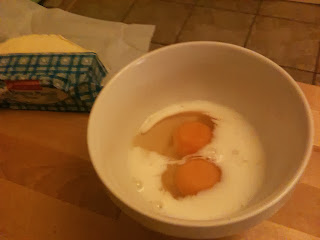Well, it’s the end of
the month again. Worse, it’s exam time. So not only do you lack money. You also
have little time. Hence this frugal blog post: no pictures, no poems and no-pennies recipes (almost) – written as I wait for my apple tart to cook.
Of course, when I were
a lass, ketchup and spaghetti was what we ate at such times, shivering in
shared houses as the mould crept across the ceiling. Aye, it were look-chérie!
But I understand that
the youth of today have more exotic tastes, so here are three alternatives:
- Ketchup and rice
- Dog food
- Ketchup and string.
Only kidding. After
all dog food and string have become so expensive these days. Here are my real
suggestions.
1. Pasta, pesto and baked beans
This is one of my
favourite meals, so it’s more of a reminder than a recipe. The proportions roughly
are 125g of pasta, a quarter of a small jar of pesto and a half a standard can
of Heinz per person. And if you have the misfortune to be a student in a
country where there are no Heinz beans… well, scour the Internet until you find
someone like the wonderful Clarence from Clarence and Cripps, who imports and
dispatches them at astonishingly reasonable rates.
2. Pasta, butter and grated cheese
Another classic.
Foodie types may witter on about half-parmesan-half-pecorino, but I think
bog-standard, bagged’ngrated, industrial Emmental works best. The trick is to
put plenty of butter, salt and pepper – and to stir your drained pasta with
the butter and cheese back on the heat ever-so-briefly to make sure the cheese
melts. Amounts of everything to be determined by instinct and availability.
3. Love-hate spaghetti (aka pasta with marmite…
and butter of course)
Yes, it sounds
disgusting even to marmite lovers, but domestic goddess, Nigella said it worked
– and it does. Shame her reputation has taken a bit of bashing this last week,
but that was for substances other than yeasty spreads. The trick again is
plenty of butter. Nigella suggests 50 grammes of butter for 375 gees of pasta,
but I usually put at least 25 grammes for one serving of spag, with a small
spoonful of marmite. The method is to melt the butter in a saucepan, then to
stir in the marmite and mix, before chucking in the pasta and stirring it around.
Add nothing more for sheer heaven on a plate.
And if you have the
misfortune to be a student in a country where there is no marmite… well,
Clarence stocks it.
Quiz question of the week
Q: How do you tell
when you have passed definitively from the old world to the new?
A: When you use the
term “care package” to describe the box of beans and chocolate hobnobs your
mother sends you. Still, better than calling it a “tuck parcel”, I suppose.
Tip of the week
If your apple tart
burns slightly while you are writing a blog, simply sprinkle it with icing
sugar and no one will know.





















































